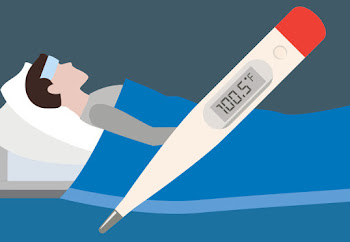What to Do If Your Child Has a Fever
This is the last item you would like to try to to for a toddler that's ill and may actually both prolong the illness and truly cause more harm. the very fact that there's little to no evidence that Tylenol/Advil therapy contributes to health has not stopped marketers, and sadly, most doctors from continuing to offer patents this bad advice. What exactly may be a fever? Simply put, fever is that the body treating itself with heat. What happens during a fever? An infectious agent (bacteria, virus etc.) is engulfed by a neighborhood of your system referred to as a macrophage. A series of chemical reactions happen that causes the thermostat (set-point) of your body to show down. The body perceives its normal temperature too low and begins to get more heat by shivering, and conserving heat by constricting the blood vessels, which limits blood flow to the skin and by shutting down the sweating mechanism. this is often what causes chills. The system also releases chemicals that provoke sleep to assist preserve energy for fighting against the infecting germs. At an equivalent time chemicals are released that promote the breakdown in muscle tissue, which increases the body's amino alkanoic acid supply, the raw materials it uses for defense, repair and energy. this is often why muscle aches are common are common with fevers and chills. Excess amino acids also suppress the appetite. this is often important because the gastrointestinal system shuts down when the temperature goes above 99.5°F. If food is eaten during a fever it'll strain the system by not being properly digested, and may increase the toxic load of the body, inhibiting its ability to affect the reason for the fever.
When the blood heat is elevated white blood corpuscle production, motility, and killing ability is enhanced and antibody production is increased up to twenty times. While the fever is cranking up the body's defenses, it's also providing an inhospitable environment for the germs. At a temperature of around 104°F most bacteria and viruses are killed. Before the supply of antibiotics, syphilis was treated by infecting the patient with malaria, inducing a high fever and resulting in a cure.
The ideal temperature for a fever is between102-103°F for fighting communicable disease . 104-107°F is taken into account the purpose where dehydration becomes a significant concern and fevers above 107°F as frankly dangerous. Most harm related to high fevers is typically thanks to dehydration instead of the fever itself. the priority should be more directed towards the explanation for the fever instead of the fever itself. Serious conditions like meningitis can cause a high fever, but the treatment should be directed towards the meningitis, not the fever.
What about the foremost common fear for parents- febrile seizures? All the medical research I even have found has debunked the 2 most ordinarily held misconceptions about high fever in children: that it may result in dangerous seizures, which fevers from infection must be controlled before they reach a particular point, (usually I06°F), to stop seizures and brain damage. Febrile seizures tend to occur early within the fever process, instead of after fevers have mounted, and a
little percentage of youngsters simply seem to be susceptible to them; administering fever-reducing medicine doesn't debar their recurrence. Most febrile seizures are the results of imbalanced electrolytes thanks to dehydration from diarrhea, vomiting and increased perspiration. Good management within the sort of limiting food and maintaining fluids and electrolytes will prevent most fevers from getting to more critical stages. And while it's true that fevers over I06°F are potentially damaging, such high temperatures are virtually always the results of heat stroke or brain injury, not infection, then fears of a chilly or flu causing a fever to rise to the present level are groundless.
What happens once you provides a fever reducer like Tylenol? the whole metabolism is stopped in its tracks stops and now you continue to have an infection, but with none natural defenses. the doubtless infectious person, rather than staying in bed because they feel sick, feels tolerably to travel to figure or school exposing their colleagues to an equivalent illness. The maker of Tylenol (and those that manufacture other fever-reducing products) have successfully convinced the general public that something absolutely must be done to bring down all fevers in young children. consistent with a recent article:
"Keeping in mind that bringing fever down by using medication possibly postpones recovery, increases the probability of a secondary infection, deprives one of clues on the need for further examination or for changes within the therapeutic approach, and should provoke widespread side effects, physicians should treat feverish patients only the expected benefits outweigh the possible risks." (i)
Anti-fever medications are marketed to be used in children for many years , with drug companies spending $50 million a year on heart-tugging ads in parenting magazines et al. . Still, it's long been acknowledged there's little or no data from studies within the very young to point out the medicines are safe and work. Worse, some studies suggest the medicines aren't any better than dummy pills in treating cold and cough symptoms in young children.


Comments
Post a Comment